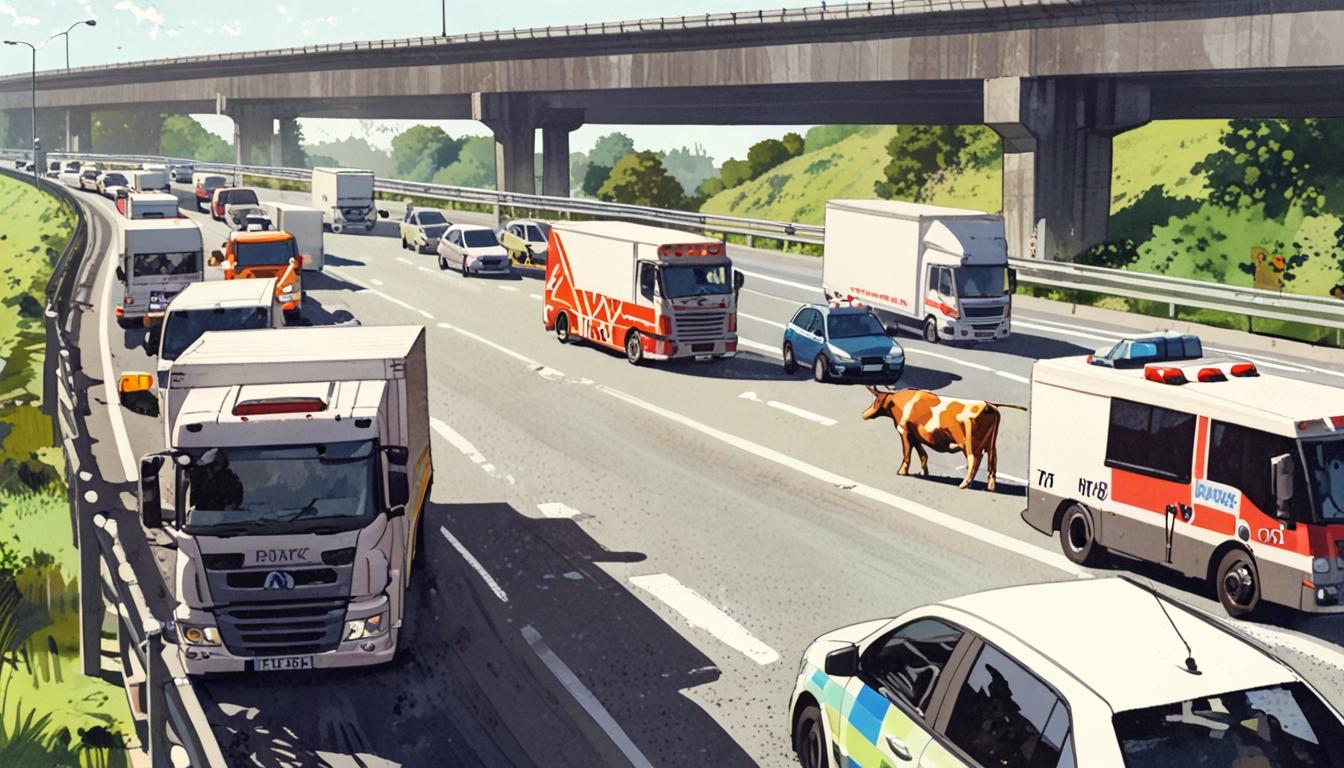The M4 motorway continues to be a critical artery for transportation in Wales and England, yet recent incidents have highlighted the vulnerabilities it faces regarding wildlife and other unexpected obstructions. A recent occurrence involved animals straying onto the road, leading to notable traffic delays around the Prince of Wales Bridge. These incidents not only disrupt the flow of vehicles but also underscore the ongoing challenges associated with maintaining a safe and efficient motorway.
On January 24, 2025, between Junction 17 (Chippenham) and Junction 18 (Bath/Tormarton), the motorway was brought to a standstill for approximately ten minutes as efforts were made to remove animals from the road. While traffic resumed shortly thereafter, significant queues remained, demonstrating how even brief interruptions can exacerbate congestion, especially during peak travel times. Such situations reveal the occasional, yet very real, threat posed by wildlife to motorists and the need for prompt responses to minimise disruptions.
Similarly, in an earlier incident reported by Inkl, a cow was responsible for a temporary closure of the M4 westbound near the bridge, leading to Gwent Police intervening to manage the obstruction. This, while a serious matter, drew humorous commentary on social media, highlighting how the intersection of everyday life and traffic management can evoke both frustration and levity amid delays.
However, not all incidents have derived from animals. A significant fire involving a lorry carrying 24 pallets of wine on June 22, 2024, caused a substantial six-hour closure of the westbound carriageway, as reported by Wiltshire Live. Fortunately, no injuries occurred during the episode; however, it raised awareness of how commercial transport can lead to extended road closures and resultant chaos, particularly on a busy route like the M4.
Fire-related incidents seem to plague the motorway, with another vehicle fire reported on October 4, 2024, resulting in traffic being limited to one lane for a period. This incident further emphasises the risks associated with both vehicular use and transport of goods along this vital roadway. Given the dependency on the M4 for essential goods and daily commutes, the cumulative effect of such events can have far-reaching repercussions, particularly in terms of economic impact and commuter stress.
Furthermore, historical incidents involving multi-vehicle crashes have also contributed to traffic disruptions. For example, a serious crash on March 2, 2023, resulted in an air ambulance being deployed as part of the emergency response, indicating the potential for loss of life or serious injury during such chaotic events. Motorists were advised to use alternative routes, exemplifying the need for effective contingency planning in unexpected situations.
In light of these increasing incidents—be it wildlife or transport-related—the authorities must prioritise solutions that can mitigate future occurrences. This may involve enhanced monitoring of wildlife crossings, more vigilant road management practices, and proactive communication with motorists about alternative routes during prolonged disruptions. As the M4 remains a crucial lifeline for many, ensuring its reliability is imperative for the communities it serves.
Ultimately, these events serve not only as a reminder of the unpredictability of road travel but also highlight the shared responsibility between local authorities, emergency services, and motorists in ensuring safety and efficiency on one of the busiest motorways in the UK.
Reference Map
- Paragraphs 1, 2
- Paragraphs 2, 3
- Paragraph 3
- Paragraph 4
- Paragraph 4
- Paragraph 5
- Paragraph 5
Source: Noah Wire Services
